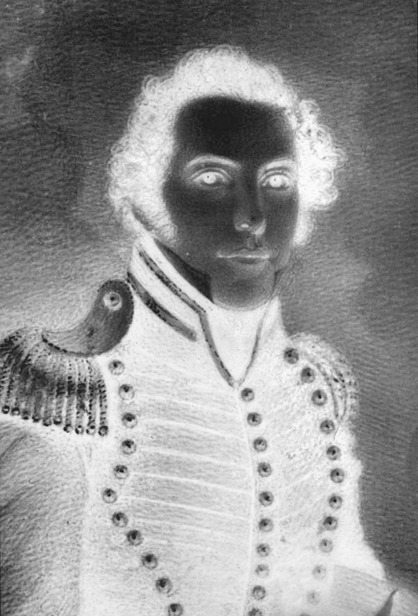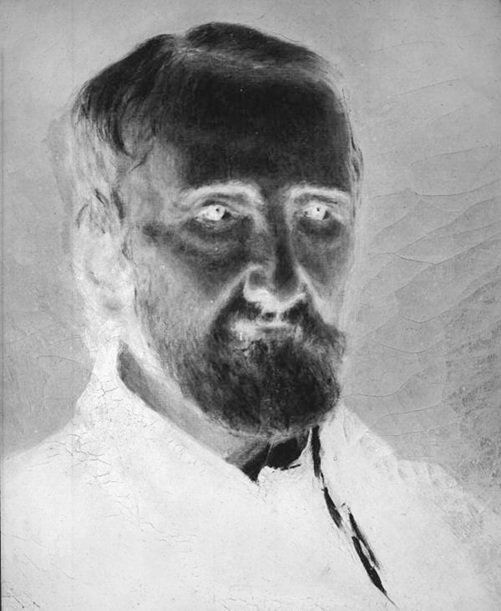The History of Florida (48 page)
Read The History of Florida Online
Authors: Michael Gannon
Tags: #History, #United States, #State & Local, #Americas

blacks, and slaves resided in the remainder of the town. Seminoles from
the Alachua Prairie often came to St. Augustine to sel cattle and horses.
After 1842, Jacksonville, Fernandina, and other new towns eclipsed the old
Spanish capital’s commercial importance. In the decade before 1861, tourism
became a staple of St. Augustine’s economy. To the south, along the Matan-
zas, Tomoka, Halifax, and other coastal rivers, large plantations had been
carved from the Florida wilderness by British absentee owners between 1763
proof
and 1783. Initial y indigo, rice, and naval stores plantations, many were con-
verted to sugar cultivation after the change of flags. These continued to be
large estates, some worked by more than one hundred slaves.
West of the St. Johns River, travelers heading toward Tal ahassee encoun-
tered Seminole vil ages whose established inhabitants resisted Anglo-Amer-
ican intrusion. General Duncan Clinch, John H. McIntosh, and Moses Elias
Levy had plantations in the interior district of Alachua. Levy, a Sephardic
Jew who had lived in Morocco, Spain, the Danish Island of St. Thomas, and
Cuba before arriving in East Florida in 1818, had purchased 60,000 acres
from Fernando de la Maza Arredondo, a Spanish Florida merchant. Levy
planned to establish a colony of Jewish settlers from Europe. When recruit-
ing efforts failed, he purchased African slaves. His son, David Levy Yulee,
an attorney in St. Augustine and a sugar planter in Alachua County, became
one of Florida’s leading politicians.
Throughout the territory, two issues were of fundamental importance:
access to land (or validation of existing deeds) and removal of the Seminole
Indians. Spain ceded nearly 40 million acres of land to the United States,
much of it uninhabited and a potential bonanza to speculators and settlers.
228 · Daniel L. Schafer
The absence of land records for West Florida complicated transmittal of
deeds. For East Florida, where the bulk of Spanish and British land grants
had been made, records were acquired by U.S. marshal James Grant Forbes
(born in St. Augustine in 1769, the son of the Reverend Johns Forbes, an
Anglican minister) during a mission to Havana in 1821. Forbes became the
first mayor of American St. Augustine. Land claims dragged through the
court for decades. Particularly vexing were legal problems associated with
the Arredondo Grant of 300,000 acres in Alachua, and the Forbes Purchase,
a grant to John Forbes and Company by the Spanish Crown of 1 mil ion
acres on both sides of the Apalachicola River.
Under terms of the Adams-Onís Treaty, the United States agreed to
honor valid Spanish titles, and Congress created a board of commissioners
for Pensacola and St. Augustine to adjudicate the claims. In 1826, unsettled
Spanish land grant claims were assigned to the receiver of the Land Office,
and later to the federal courts. Congress also passed a Donation Act in 1824
to permit squatters to acquire valid titles to a maximum of 640 acres. In
1828, it became legal to “pre-empt” previously settled land from public sale
for a fee of $1.25 an acre. Land offices for sale of surveyed public land were
established in Tal ahassee and St. Augustine in 1825 and 1826 and in Newn-
ansville after 1842. During the territorial years, most of the public land that
proof
sold was located in Middle Florida, for prices that averaged $1.25 an acre.
Over time, as the population increased and the demand for land led to in-
creased prices, speculators made fortunes.
The appointment of Andrew Jackson as the first governor of the Territory
of Florida sent a warning to the Seminole that their days in Florida were
limited. Removal of Native Americans of the Southeast to reservations west
of the Mississippi River became national policy, and no one would adminis-
ter it more efficiently than the man the Creek called “Sharp Knife.” After de-
feating the Creek at Horseshoe Bend in 1814, Jackson forced the vanquished
Creek to cede nearly 20 mil ion acres of land. Few among the Creek and
Seminole in Florida doubted that Jackson would attempt to remove them.
Jackson’s elections to the presidency in 1828 and 1832 and passage of the
Indian Removal Law of 1830 only hastened the inevitable.
Governor Duval insisted that the 5,000 Seminole living in vil ages along
the Apalachicola and Suwannee Rivers, in Alachua, and near Tal ahassee
evacuate the territory, but their leaders refused to leave. Violent conflicts
with encroaching settlers prompted volumes of angry letters and petitions
to the governor and the president. Plantation owners accused the Seminole
of killing their cattle and enticing slaves to escape; newspaper editors called
U.S. Territory and State · 229
for speedy removal of the “murderous savages.” Seminole leaders also so-
licited the governor’s protection, accusing the settlers of stealing cattle and
capturing free blacks and slaves from Native American vil ages.
In September 1823, a commission headed by James Gadsden met with
seventy Seminole leaders at Moultrie Creek, five miles south of St. Augus-
tine. After two weeks of intense negotiations, thirty-two of the chiefs re-
luctantly agreed to terminate their rights of occupancy in north Florida
in exchange for a reserve of 4 million acres located between the Peace and
Withlacoochee Rivers. Gadsden promised that the U.S. government would
provide financial subsidies to the Seminole for twenty years. The govern-
ment thus added 24 mil ion acres in north Florida to the public domain,
much of it prime planting land, in exchange for what even Governor Duval
thought to be worthless land. Duval and Gadsden agreed, however, that
it was of paramount importance to move the Seminole to the reserve and
concentrate them to facilitate removal to west of the Mississippi.
Further pressure was required to prompt reluctant Seminoles to begin
trekking south, and once on the reserve they discovered the land was infer-
tile. After suffering drought and crop failure, an army officer who observed
their plight predicted they would either starve or be forced to leave the re-
serve and steal from nearby settlers. Colonel George F. Brooke distributed
proof
rations rather than watch them die of starvation.
The Seminole soon began returning to their former homes in north Flor-
ida, renewing conflicts with settlers and intensifying pressures for removal.
In 1832, President Jackson sent Gadsden to renegotiate. The resulting Treaty
of Payne’s Landing has been embroiled in controversy since it was marked,
in lieu of signatures, by fifteen Seminole leaders on 9 May. Gadsden insisted
the Seminole agreed to a mass evacuation within three years. The Seminole
vehemently disagreed, claiming their intention had been to send a delega-
tion to inspect the lands in the west and report back. Departure was contin-
gent on a favorable vote of their people.
The delegation of seven Seminoles that visited the western lands signed
another pact on 28 March 1833, often referred to as the Treaty of Fort Gib-
son. John Phagan, the Indian agent representing the government, inter-
preted it as an agreement that the land was acceptable even though it was
control ed by Creek factions whom Seminole leaders considered hostile.
Seminole leaders adamantly insisted they would never agree to merge with
their bitter enemies despite having common cultural origins. Furthermore,
they charged that Phagan refused to transport them back to Florida unless
they signed the pact.

230 · Daniel L. Schafer
proof
James Gadsden. Born at Charleston, South Carolina in 1788, Gadsden served as an aide
to General Andrew Jackson in 1818 during the First Seminole War. He is best known
in Florida for heading the U.S. delegations in negotiations with the Seminole that re-
sulted in the Treaty of Moultrie Creek in 1823 and the Treaty of Payne’s Landing in 1832.
Courtesy of the State Archives of Florida,
Florida Memory
, http://floridamemory.com/
items/show/26225.
Historian John K. Mahon, the leading authority on the subject, con-
cluded that coercion, bribery, and deceit produced the signatures at Payne’s
Landing and Fort Gibson. Andrew Jackson, however, gave orders to expe-
dite removal. The outraged Seminole refused to cooperate and began plan-
ning to attack the Americans. These attacks escalated to become the Sec-
ond Seminole War, 1835–42, and the Third Seminole War, 1855–58. Battle
casualties and the forced removal of the Seminole to the trans-Mississippi
West reduced their numbers to approximately 200 persons living in smal ,
scattered bands in the remote regions of south Florida.

U.S. Territory and State · 231
At the conclusion of the Second Seminole War, Congress passed the
Armed Occupation Act of 1842 (AOA) to encourage white population
growth in south Florida and to further pressure any remaining Seminole to
leave. The act permitted a head of family or a single man capable of armed
defense to claim 160 acres of land south of Gainesvil e and north of the
Peace River. Nearly 1,200 individuals received title to 200,000 acres of land,
and 6,000 persons moved to south Florida as a result of this legislation.
Claimants rushed to lands on the Indian River on the Atlantic coast, and
Hil sborough County in southwest Florida, which previously had been in-
habited by Seminole.
Near the deactivated military outpost at Fort Pierce on Indian River, a
colony of migrants from Augusta, Georgia, created a thriving settlement.
Caleb Lyndon Brayton, one of the Augusta migrants, had moved from Mas-
sachusetts to Augusta in the 1830s and prospered as a merchant. Passage
proof
Major Robert Gamble. After the Second Seminole War and the forced migration of the
Seminole to reservations west of the Mississippi River, Major Robert Gamble moved
seventy slaves from Middle Florida to establish a 3,500-acre sugarcane plantation
along the Manatee River in Hillsborough County. Gamble’s massive sugar mill was de-
stroyed during the Civil War, but the Gamble Mansion still stands at Gamble Plantation
Historic State Park at Ellenton, Florida. Courtesy of the State Archives of Florida,
Florida
Memory
, http://floridamemory.com/items/show/29750.
232 · Daniel L. Schafer
of the AOA prompted him to move to the south Florida frontier. Despite
periodic bouts with tuberculosis, Brayton threw himself into pioneer life
with remarkable energy, clearing land and building a cabin on high ground
overlooking the Indian River. By 1845, he had planted more than 140 acres of
arrowroot, pumpkins, and other produce and had begun to market poultry,
dried fish, and green turtles in Key West. He acquired a schooner to fa-
cilitate his trade and dreamed of the wealth he would gain from pineapples
and other fruits and vegetables planted on an additional 160-acre tract he
purchased. Filled with unbridled enthusiasm, Brayton’s letters to his wife in
Augusta are an enduring testimonial to the rigors as well as to the exhilara-
tions of pioneer life. The letters also document the profound loneliness of
life on the south Florida frontier.
Across the peninsula from Fort Pierce, the AOA stimulated development
